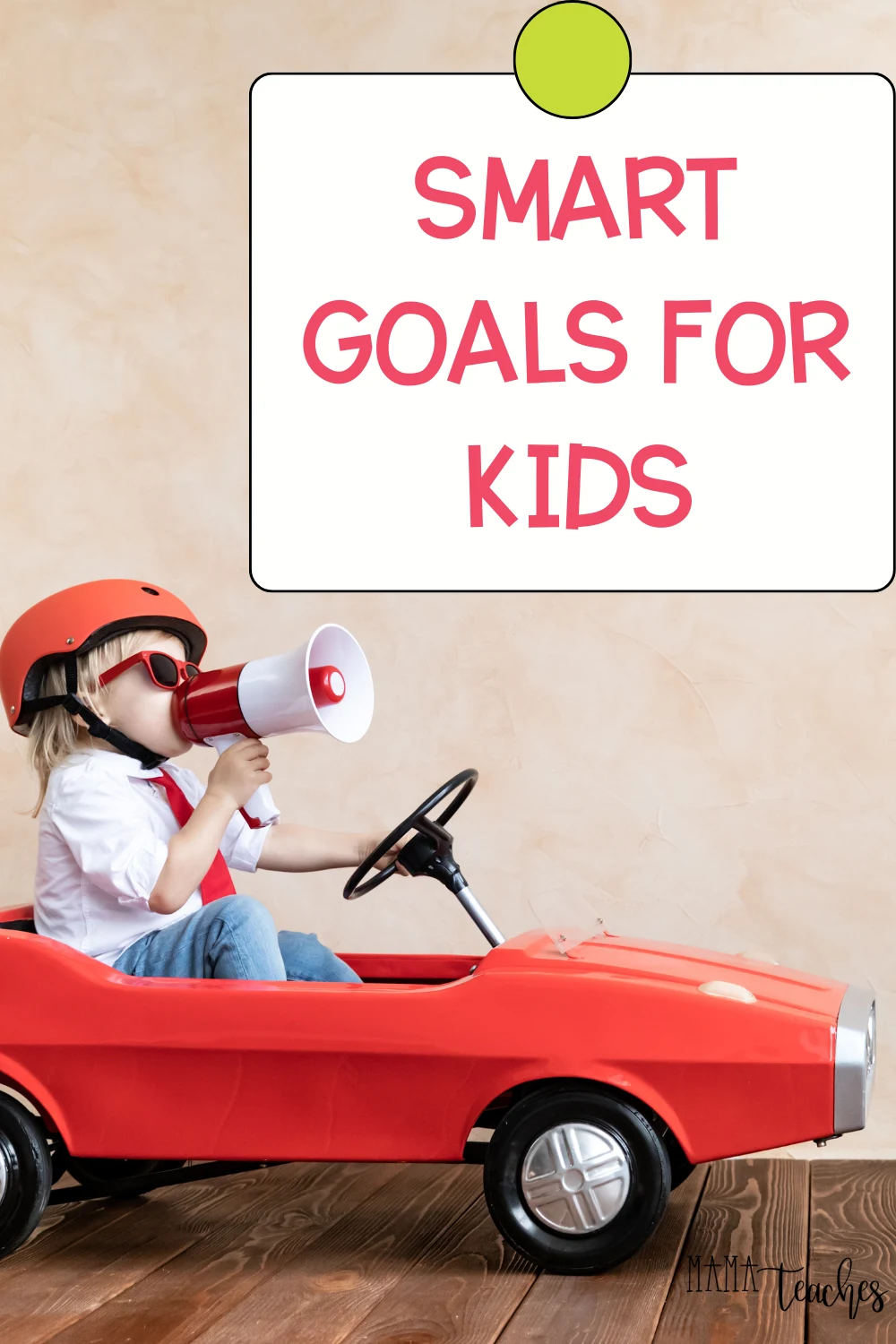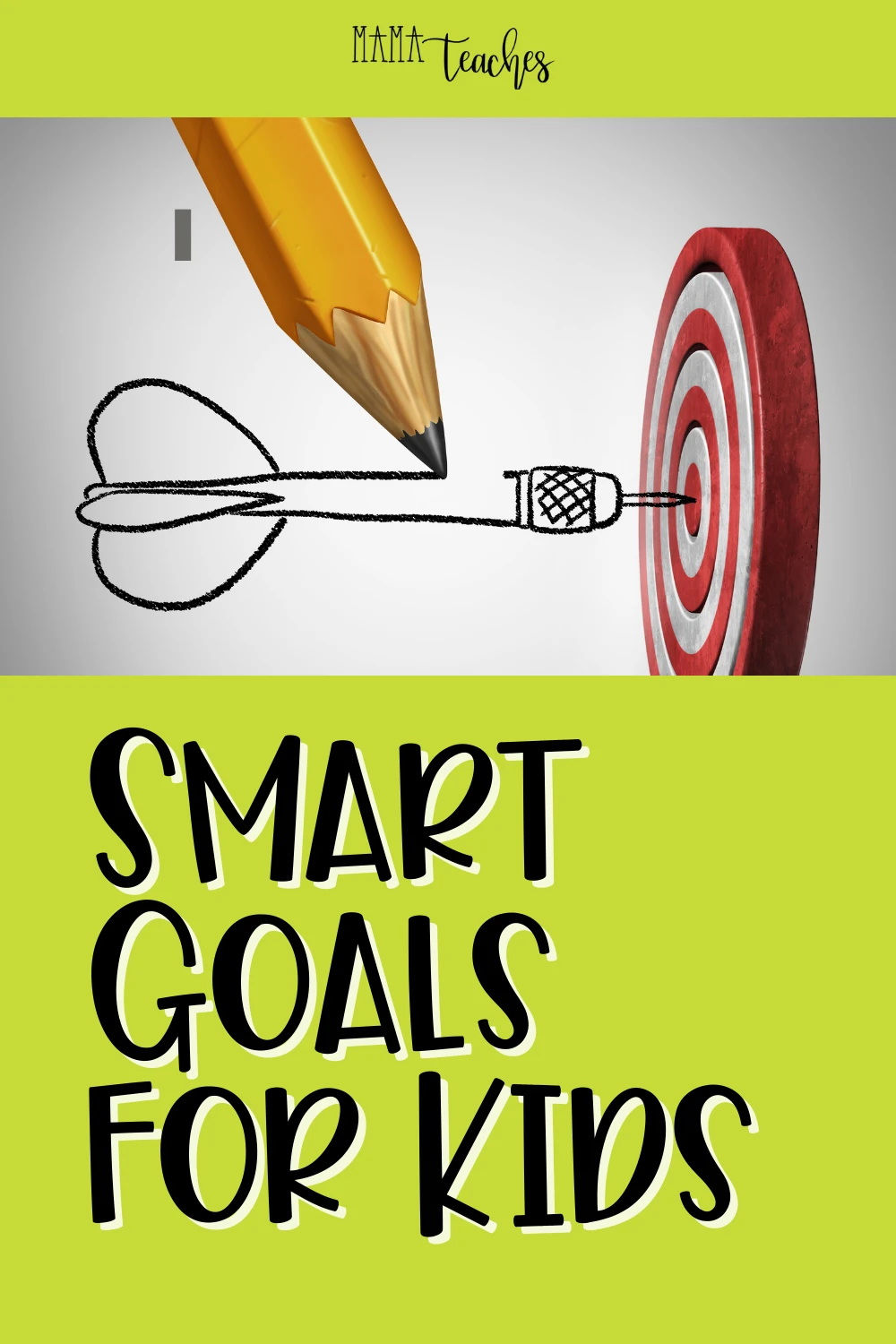Setting SMART goals for kids is a recipe for success!

Setting goals is a fundamental life skill.
It can benefit children at every stage of their academic journey and beyond.
Whether they are in elementary, middle, or high school, teaching kids SMART goals is valuable.
They will gain a sense of responsibility, motivation, and accomplishment.
SMART goals are Specific, Measurable, Achievable, Relevant, and Time-bound.
Below, we’ll talk more about what SMART goals are and provide examples.
Let’s go!

This article contains affiliate links to things that you might like.
SMART Goals
What are SMART goals?
SMART goals are a useful framework for making and obtaining goals.
Its design guides individuals in setting clear and effective intentions.
The acronym SMART stands for:
Specific:
Goals should be clear and concise, outlining exactly what the child wants to achieve.
Measurable:
Goals should include criteria to track progress and determine success.
Achievable:
Goals should be realistic and attainable within the child’s current abilities and resources.
Relevant:
Goals should be relevant to the child’s interests, values, or academic requirements.
Time-bound:
Goals should have a timeframe or deadline, adding to the sense of urgency and motivation.

Examples of SMART Goals
Now, let’s explore examples of SMART goals for kids in different age groups.
We’ll include elementary school, middle school, and high school.
Elementary School
Specific: “I will read 10 picture books on my own by the end of this month.”
Measurable: “I will keep track of the books I read in my reading journal.”
Achievable: “I will spend 20 minutes reading every day after school.”
Relevant: “This goal will help me become a better reader and enjoy stories more.”
Time-bound: “I will complete this goal by the last day of this month.”

Middle School
Specific: “I will improve my math grade from a C to a B in the next two grading periods.”
Measurable: “I will track my math test scores and homework grades.”
Achievable: “I will seek help from my teacher or a tutor if I struggle with any math concepts.”
Relevant: “Improving my math grade will help me excel academically and boost my confidence.”
Time-bound: “I will achieve this goal by the end of the second grading period.”

High School
Specific: “I will prepare for the SAT by completing 3 practice tests per week for 3 months.”
Measurable: “I will record my test scores and review incorrect answers to track progress.”
Achievable: “I will allot 2 hours every Saturday morning for practice tests and study sessions.”
Relevant: “Scoring well on the SAT is essential for college admissions and scholarships.”
Time-bound: “I will achieve my target SAT score before the application deadline in 3 months.”

Why Teach Kids to Set SMART Goals
Teaching kids to set SMART goals can empower them.
They can take charge of their learning and personal development as they see fit.
It also helps them to develop essential life skills, such as time management and self-discipline.

SMART Goals for Kids
Setting SMART goals is a valuable skill that can benefit kids at every stage of education.
By guiding them to create specific goals, we enable them to take ownership of their success.
Encourage children to set SMART goals tailored to their age and abilities.
Then, watch them flourish as they work diligently towards achieving their dreams.
This fundamental life skill will serve them well throughout their lives.
SMART goals will help them turn their aspirations into accomplishments.
You May Also Like…
